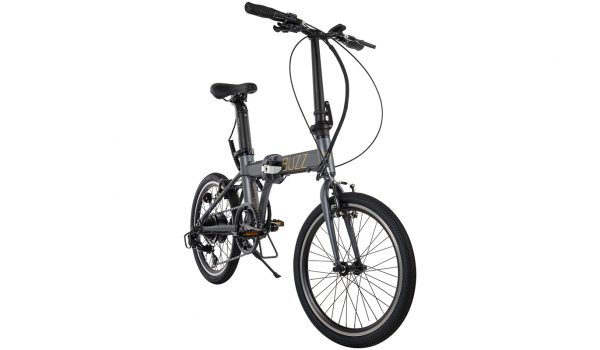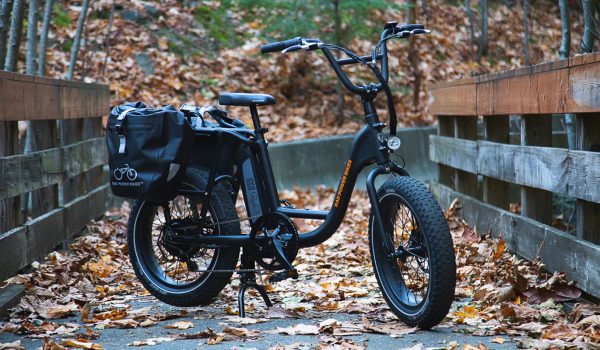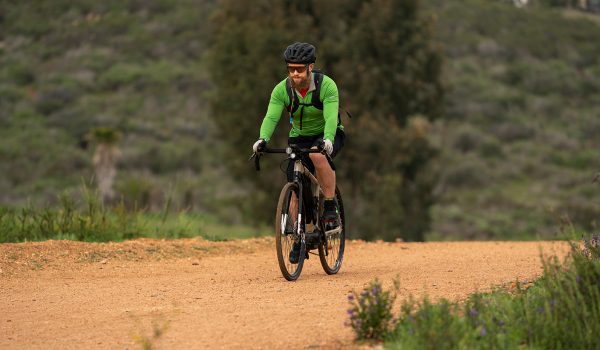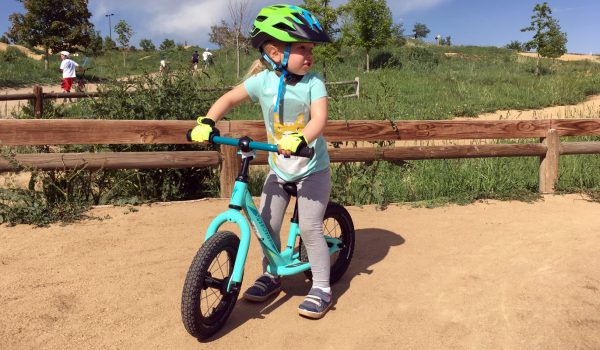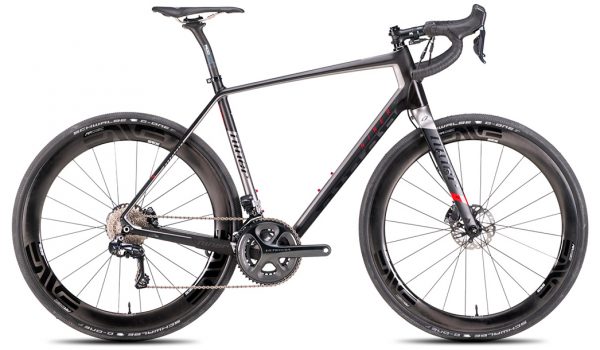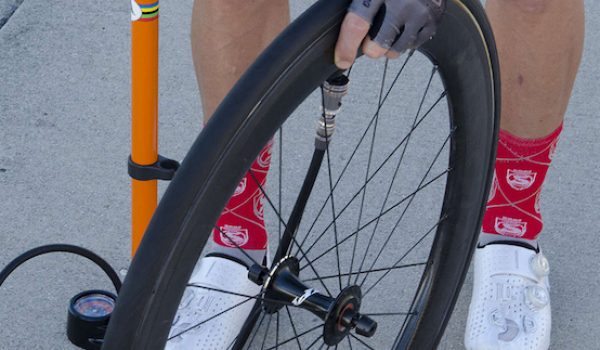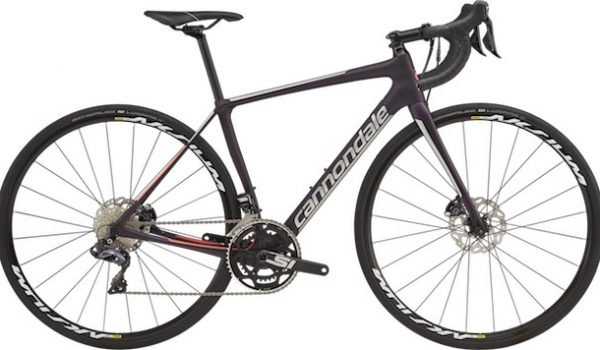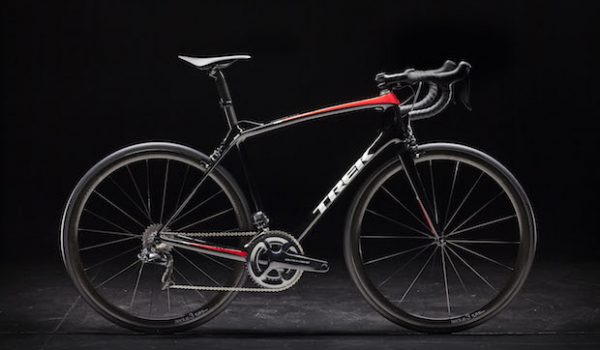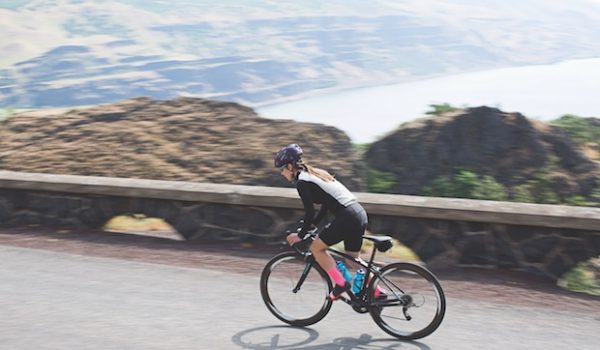
The Best Road Bikes
Our highly experienced reviewers perform extensive field tests and score products on objective criteria to determine the best bikes in five different categories.
We divided our bike reviews into entry-level road bikes under $1,200; mid- to high-end bikes, for more expensive bikes that offer the rider more speed, impossibly light weights, greater comfort, or an advantage against the wind; cyclocross bikes, more rugged rigs made to tackle both grass and dirt; the cyclocross bike’s country cousin, the gravel/adventure bike, designed for all road conditions, including dirt and gravel; and time trial bikes, the most aerodynamic of bicycles and a favorite among triathletes (but cyclists shouldn’t hold that against them).
How to Select the Best Road Bike for You
The Best Road Bikes by: Robert Annis
Decades ago, this would have been a pretty straightforward answer. Road bikes were designed for going as fast as you could on paved streets. Frames were steel, then aluminum. The skinnier the tires, the better.
But ever-changing technology and product categories now make choosing a new bike as daunting a task as climbing France’s Ventoux. Do you plan to race, or at least challenge for every Strava KOM in your zip code? Is a triathlon in your future? Maybe long, meandering rides sound more up your alley? Why not add some gravel to the mix as well? Once you have an idea of where you want to go and how you want to ride there, there are the more specific questions to guide your bike selection.
What’s Your Budget?
We all wish we had an unlimited amount to spend on bikes, but with very few exceptions, we need to stay within a set budget. Luckily, you can get a lot of bike for – relatively speaking – for not a lot of cash.
For casual 10- or 20-mile rides with friends on the weekends, there’s no reason to spend big. For right around a $1,000, the frame will likely be aluminum, with a carbon fork as a higher-end option within this price range. Expect it to weigh 20 or more pounds. Components will likely be SRAM Rival or Shimano’s two budget gruppos: Tiagra or 105. Solid groupsets for sure, but heavier and the shifting won’t be as crisp as their more expensive counterparts. You’ll roll on alloy hoops that, once again, will be heavier and slower to engage than their counterparts on a more expensive bike.
As the price ticks up beyond $1,200, so do the options. Wheelsets will have upgraded hubs and either stronger or more aero rims. Component choices will range from SRAM Force and Red, Shimano Ultegra and Dura-Ace, or, the coveted Campagnolo Record or Super Record. You can even choose between mechanical or electronic shifting.
At this price carbon fiber is a realistic option, but beware; not all carbon is created equal. Each manufacturer has different levels and layups of carbon; each of which affects the weight and characteristics of the bike. For example, Trek mostly uses its lightest, highest-grade 700 Series OCLV carbon to build their top-of-the-line climbing bike the Emonda, but the stiffer 600 Series OCLV for their highest-end Madone and Domane bikes. The layups will be distinctive as well, with various types of carbon used to reinforced different sections, depending on the bike’s purpose.
But as the price drops from the highest-priced bikes, so does the quality of carbon, going down to its 300 Series OCLV for its “lower-end” carbon bicycles. Lower-end is in quotation marks because the rider is still getting a great bike for the cost – consider the price difference between the $1,700 Trek Emonda S5 and the $11,000 Emonda SLR 9.
What Do You Want To Accomplish on the Bike?
When it comes to mid- to high-end road bikes, you have plenty of options. Depending on your riding preferences, you can choose to go aero, endurance, super lightweight climbers or straight-up racy.
Aero Bikes
Aero bikes, like the Scott Foil, Giant Propel, or the Specialized Venge, are designed to cheat the wind. The handlebar, seat post and frame tubes are all elongated and computer-engineered to cut through the air with as little disruption as possible, including the cables which are partially hidden in the tubes. Rim brakes are often hidden behind the tubes to reduce drag, while the first disc brake options are starting to come to market. These are great bikes for riders who want to follow in Ricky Bobby’s footsteps and just go fast.
Endurance Bikes
If you prefer century rides or gran fondos to all-out sprints and criterium racing, then consider an endurance bike such as the Giant Defy, Bianchi Infinito or Specialized Roubaix. The bikes still have plenty of zip for fast riding and signpost sprints, but with a more relaxed riding position – namely a taller head tube, slacker angle and sloping top tube – that won’t have you chugging ibuprofen the next day.
Lightweight Climbing Bikes
If your favorite roads point straight up, then lightweight climbing bikes like the Trek Emonda, Cervelo RCA, and Merida Scultura 9000, might be your ideal steed. Tipping the scales at an anorexic 10-15 pounds each, these bikes are actually too light to be ridden in UCI races, but could be your secret weapon for that hilly gran fondo you’ve been targeting.
Race-Inspired Bikes
Want to mix it up in a crit race or, at the very least, Wednesday Night Worlds at your local shop ride? Race-inspired bikes such as the Giant TCR Advanced or BMC Teammachine, are designed to be pedal fast and corner like a finely tuned Formula One car. If you’re competing in criteriums on a limited budget, prioritize a better gruppo over a high-priced frame, as you’ll often find broken bike frames littered across the racecourse. Consider a Cannondale CAAD12 or Specialized Allez, both of which feature race-oriented geometry, a high-quality aluminum frame and a price tag south of $1,800. Best of all, the frame can be replaced for under a grand.
Time Trial/Triathlete Bikes
Do you dream of one day competing at Kona or busting the coveted hour mark in your local time trial series? Consider a bike like the BMC Timemachine, Cervelo P5-Three, and Canyon Speedmax, which are designed for one purpose: to go as fast as possible in a straight line. The riding position will be low and aggressive to fight the wind. While they share much of their DNA with aero road bikes, the key difference is in the cockpit. Time trial bikes have unique handlebars that have the rider lurched forward, resting their elbows on pads where the traditional handlebars would be. The brakes and bar-end shifters are even further forward.
While TT bikes will be faster than most road bikes over the traditional 40 kilometer distance, your equipment choices will also come into play. Loose clothing and non-aero helmets will negatively impact the benefits of a time trial machine. And one further word of warning: Time trial bikes are the least versatile of all road bikes. If you’re riding with a group most of the time or on hilly or pothole-strewn roads, steer clear of these rigs (if you plan to own only one bike), which can be harder to maneuver than a traditional road bike.
Cyclocross and Gravel/Adventure Bikes
If your tastes go beyond the blacktop, consider either a cyclocross or gravel/adventure bike. Both are designed to ride on a variety of surfaces – dirt, grass, pavement, and gravel – but there are some key differences. Cyclocross is a race, so those bikes are designed primarily for speed. A CX bike, such as the Cannondale SuperX or Ridley X-Night, will typically be lighter and better handling, have a much more aggressive riding position, and be easier to shoulder and run with.
By contrast, adventure bikes are designed for long days in the saddle, not quick 45-minute races. The geometry will be more relaxed, giving riders a more upright riding position. Gravel bikes, like the Open U.P. or Salsa Cutthroat, typically have wider gear ratios than the race-oriented CX bikes, allowing riders to tackle longer, tougher climbs. Chainstays will be longer, both for added stability in loose gravel, but also for the easier addition of panniers. Expect to find multiple rack mounts on the adventure bike, which have become the go-to choice for bikepackers.
Both types of bikes have frames and forks designed for wider tires than a standard road bike. Because cyclocross bikes typically follow UCI rules, tires can’t be more than 33 mm. Gravel bikes have no such limitation, with some tires reaching near mountain-bike widths, giving more stability and comfort on rocky, washboard-type roads. In fact, some minimalist riders are giving up their standard road and mountain bikes, choosing to go with this do-it-all bike.

The Time Fluidity is well, Timeless. A perfectly balanced and proportionate endurance road bike, with engaging handling properties. The Fluidity is positively snappy in the corners, not as quick as others in the test group, but secure and confidence inspiring. The Fluidity is a climbing delight with a slightly upright position, lightweight underneath the rider. This bike also may challenge my bias toward discs on a road bike; the Shimano Ultegra calipers are classic in design, and work really well and hem true to the nature of the Fluidity; similar to the design of the bike, which is classic.
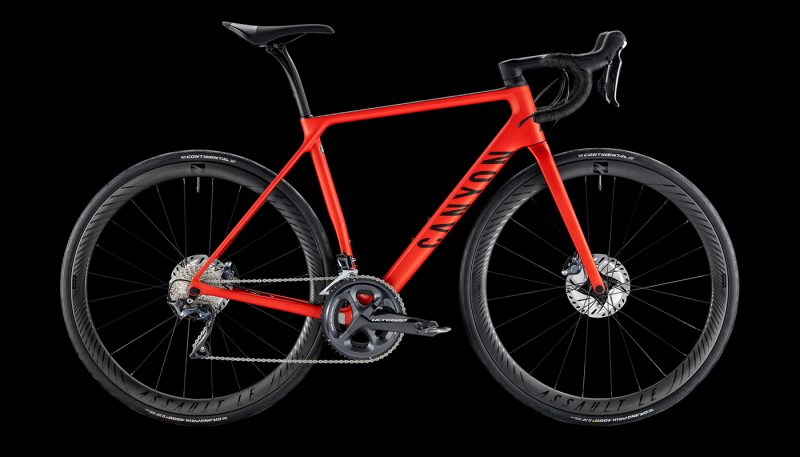
Canyon is a German company that recently came to the United States to offer their direct to consumer bikes in the American market. The CF SLX is a full carbon frame and fork bicycle with a Shimano Ultegra build that will appeal to the value-minded consumer looking for a modern bike loaded with innovation. The Canyon has incorporated many aero design elements to the CF SLX included a wing-shaped aero bar with integrated stem, as well as internal cable housing and internal seat post “clamp.” There is a lot of innovation and technology wrapped up in the Canyon CF SLX.
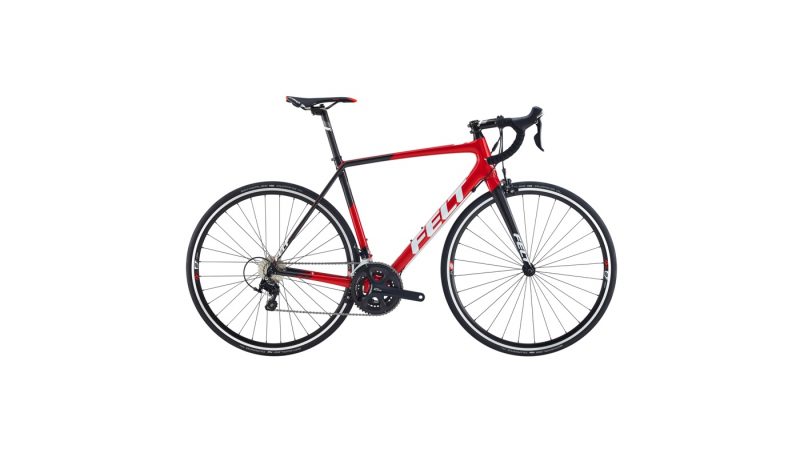
Felt’s FR5 is a perfect bike for those who prioritize speed, climbing and perhaps racing on a budget. Weighing an incredibly light 17.1 pounds at a price under $2,000, the FR5 would make any weekend racer happy. Not surprisingly the FR5 also shines on the climbs where shedding weight is paramount.
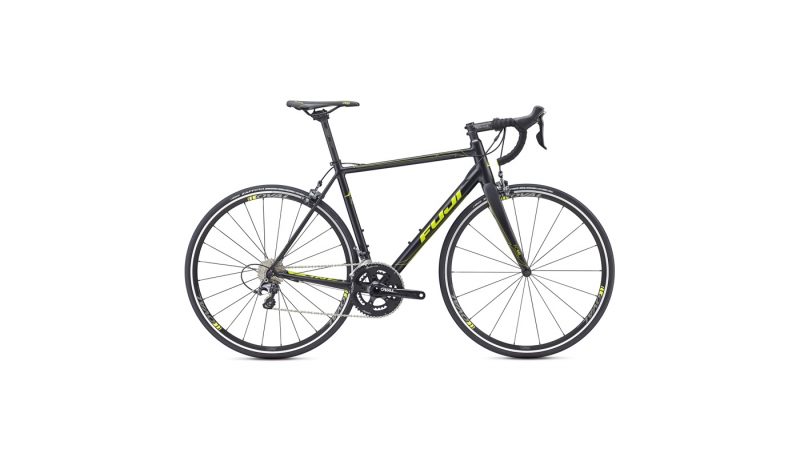
Fuji’s Roubaix is an Shimano Ultegra spec’d entry level road bike that would easily line up for a race or do century ride (with a new saddle) out of the box. The aluminum framed Roubaix and carbon fork combines for a stiff yet comfortable ride that really comes alive at speed or on a long winding downhill. A shorter wheelbase than some bikes we tested makes for a perky ride. The Oval components increase the quality feel of the bike, where the bar feels substantial in hand, and the cranks have an added level of rigidity. The Roubaix is a $1,799 bike that you can truly ride long or race, made even more impressive by that price point.

With a quality carbon frame, light nicely built wheels, and solid components the Haanjo Comp Carbon is an all-around high performer. The Haanjo was impressive on the climb where the geometry (slightly slack), tight frame, and components created a perfect climbing platform, although the brakes hindered the downhill enjoyment. The Haanjo comes in at a very competitive price point and is highly worthy of consideration.

A stainless-steel frame, carbon fork, and Shimano 105 components make for an epic, albeit nostalgic ride. Steel is the optimal material for a gravel bike, famous for its sufficient stiffness, outstanding compliance, and dampening of vibration—plus you’ll never have to worry about rust. The only downside is the mechanical disc brakes, which are not up to the gravel-riding challenge—it's worth the upgrade to the Ultegra version if you can afford it.

If a pure racing machine is what you’re looking for, the Specialized S-Works Tarmac is the best overall bike in the group (also the most expensive), with a rare combination of pure speed and handling with a fairly comfortable ride. The carbon frame is extremely stiff in all the right places, including the bottom bracket and steer tube assembly, but the layup allows for decent compliant in the rear which soaks up road vibrations. With carbon aero wheels and Shimano’s Dura Ace 9000 group, along with full carbon spec, this is a top-end racing machine worthy of the many pro teams currently racing on it.
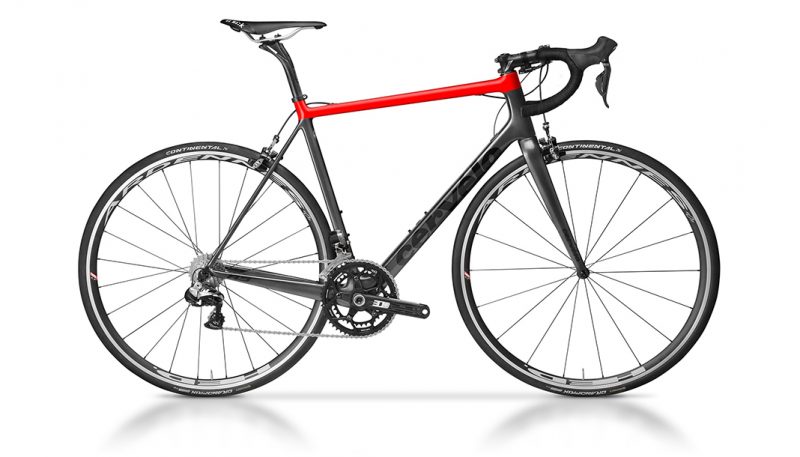
As an all-around Road Race bike, Cervelo R5 has that rarest of combinations of extreme light weight and outstanding stiffness and power transfer. And in this case it also offers an excellent ride quality and some legit aerodynamic advantages. This was unquestionably our favorite all-bike—equally adept at climbing, descending, breakaways and even some sprinting. If it weren’t for the considerably high cost—most likely thanks to the Di2 setup—and what we feel is a mediocre wheelset for a bike of this quality, this would have won Best in Class. As it is it’s a very close second, but our testers’ clear go-to for everyday riding.







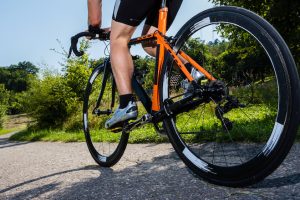
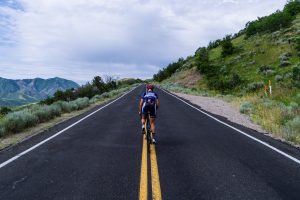
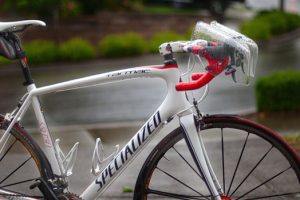

 86
86 